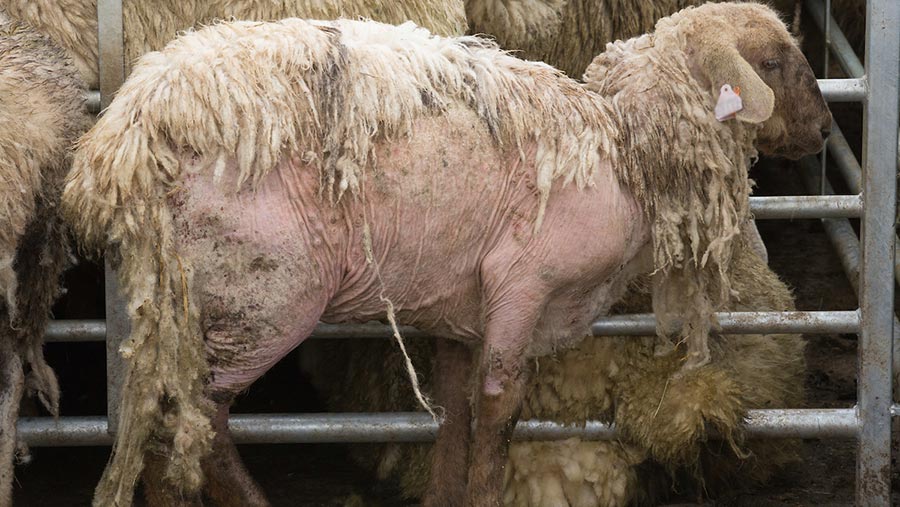Advice on testing sheep scab after common grazing
 © Tim Scrivener
© Tim Scrivener A farmer in North Yorkshire who grazes his sheep on common land has spoken out about the benefits of testing for scab and the importance of breaking the stigma related to the condition.
John Dawson, from Bleak Bank, Settle, is working with other farmers grazing the 1,416 ha (3,500 acres) Ingleborough Common, Craven, which at its peak is home to 1,800 ewes, to manage the costly condition.
See also: Sheep scab: Symptoms, diagnosis and treatment
For the past two years, 12 ewes from each flock have been tested using the blood Elisa test, which detects antibodies in sheep exposed to scab in the past six months.
Results have found scab exposure in some flocks, leading to a co-ordinated treatment approach.
Mr Dawson says: “It’s important we protect each other’s flock. We all are responsible for ensuring our sheep are free from scab, and we must eliminate the stigma attached to it.”
He adds: “How you manage a sheep scab diagnosis is important. Any flock can get it and it’s not something to be ashamed of. However, what is important is how you deal with it, and to tell your neighbours.”
Buying-in policy
Each year, Mr Dawson buys in two to three Dalesbred tups. Ten years ago, one of the tups he purchased was in quarantine when it began rubbing and losing wool.
The vet took a sample and found it to have sheep scab. Mr Dawson treated the tup with an injection containing Moxidectin for ease.
The tup hadn’t been in contact with any other stock, which allowed him to nip it in the bud and prevent it from spreading to any other stock.
Prevent scab from getting into your flock
Farmers bringing any sheep onto their farm are advised to quarantine them for three to four weeks and test 12 animals from each group after two weeks using the blood test.
The test costs about £84 for 12 animals and indicates whether the group of sheep has been exposed to scab and whether treatment is necessary, says independent sheep consultant Lesley Stubbings.
“You cannot tell simply by looking at sheep if they carry scab mites. Clinical sheep scab can take weeks, if not months, to present itself, by which time much of the flock can be infected.
“The sheep scab Elisa test means scab can’t hide from us anymore. It makes it much easier for farmers to use the right product at the right time, knocking sheep scab on the head,” she adds.
Ms Stubbings says using medicines simply as insurance or “just in case” leads to problems with resistance, but it is also expensive and often doesn’t provide the required control.
“By testing, farmers can be sure whether they need to treat or not,” she says.
Treatments to control scab
Plunge dips or injectables can be used to treat scab.
Ms Stubbings says the treatment choice comes down to the most practical method for the farmer, ensuring every animal is treated correctly.
“The main thing when treating for scab is that you do it properly, whether using an injectable or a dip.
“There is no reason why you shouldn’t use an injectable, providing it is used properly, meaning the correct dose is administered and all the animals are treated.
“It is a practical option when there is only a small number of sheep to treat or if you don’t have the facilities for dipping,” she adds.
Welfare concern
It is crucial to control scab due to its welfare and economic implications, explains Zoetis vet Ally Ward.
“Scab is so itchy for sheep and, in the later stages, they will spend all their time rubbing, scratching and biting their wool to alleviate the itching. This is a real welfare concern,” she said.
More advice on treatment and quarantine for scab is available on the Scops website.
